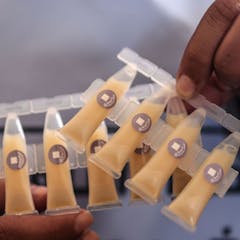
Articles on Water quality
Displaying 1 - 20 of 89 articles

Only about 61% of dairy farm operators had reported their use of synthetic nitrogen a year after reporting rules came into force.

Hard water might dry out your hair and skin − but having hard water isn’t necessarily a bad thing.

Monitoring methods based on environmental DNA are faster, more comprehensive and cheaper than traditional ecological surveys. They help fill gaps in New Zealand’s data on river health.

Recently published research is showing PFAS chemicals may be even more harmful than we thought.

While the Great Barrier Reed needs nutrients to support the ecosystem, it is possible to have too much of a good thing.

For students to learn in a safe, healthy environment, school administrators must deal with a myriad of potential environmental contaminants, from allergens to cockroaches.

Despite its importance, water management has been largely absent from the election campaign. But using trading markets to improve freshwater quality in smaller catchments deserves wider debate.

When water warms, it holds less oxygen, and this can harm aquatic life and degrade water quality. A new study finds that climate change is driving oxygen loss in hundreds of US and European rivers.

Consumers’ main concerns regarding farm monitoring are food safety, animal welfare and water quality. Many would like to see Māori values and land practices incorporated.

The aim of vaccination is to prevent infection. In addition, vaccination is intended to reduce the risk of severe illness.

Pouring these products down the sink causes society-wide problems for the entire sewerage system and the workers who maintain it.

The primary reasons for the systemic collapse include poor operation, defective infrastructure, the absence of disinfection chemicals, and lack of monitoring.

We estimate more than 200 communities across Australia do not have community drinking water fountains. That must change.

The UK needs to clean its rivers and coastlines, and could look to Europe for how to do it.

After nearly 40 years of effort, Guinea worm disease is on the cusp of being the second human disease – after smallpox – to be eradicated on Earth.

Ensuring a swimming site is safe is key to getting people using it. That means giving people timely information about water quality.

Japan’s Fukushima Daiichi Nuclear Power Plant is set to release radioactive wastewater into the Pacific Ocean – but the cause for concern is minimal.

If you’re on holidays, the water may taste different. But is it safe to drink?

UNESCO report highlights what needs to be done to save the global icon. But you might be surprised by its top recommendation.

A new report finds tap water in more than 500 remote Indigenous communities isn’t regularly tested. But here’s why this isn’t news to us.
